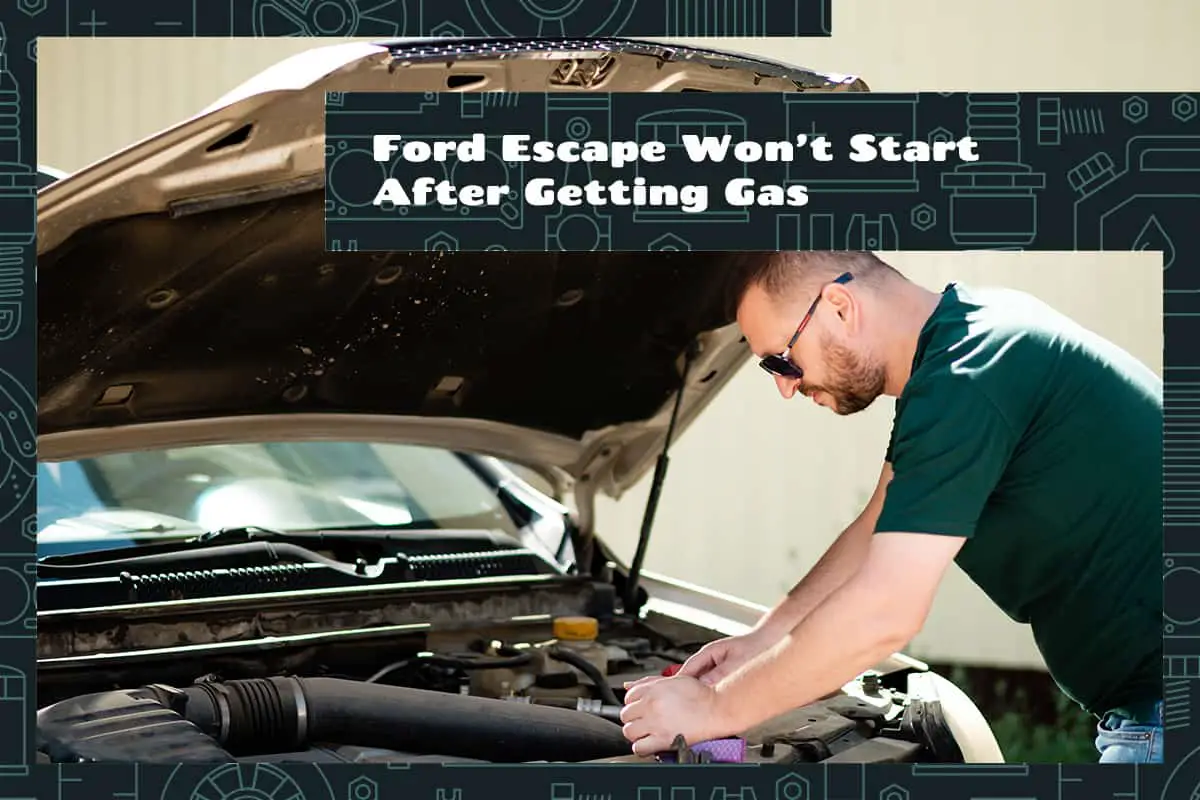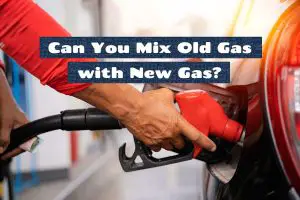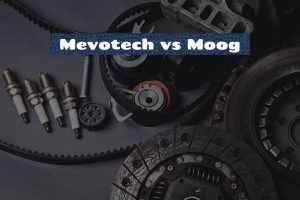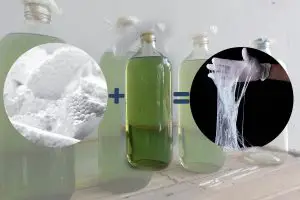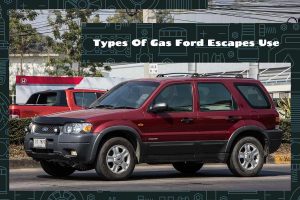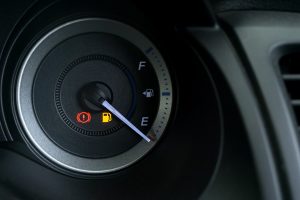If you own a Ford Escape, you might have faced a situation where your car refuses to start after getting gas. This can be both confusing and frustrating, especially if you’re not familiar with the various factors that could be causing this issue.
In some cases, a Ford Escape won’t start after getting gas due to the following:
- Fuel pump failure
- EVAP system malfunction
- Ignition system issues
- Battery or alternator problems
- Bad gas
In this article, we’ll explore each of these potential causes in detail, helping you identify the root of the problem and providing guidance on how to fix it.
A Quick Look at the Ford Escape

The Ford Escape is a popular compact SUV that offers a comfortable ride, good fuel efficiency, and a stylish design. It’s an excellent choice for families, adventurers, and daily commuters alike.
However, like any vehicle, the Ford Escape can have problems from time to time.
To understand why your Ford Escape might not start after getting gas, it helps to know a bit about the vehicle and its main components.
Engine and Fuel System Basics
Under the hood of your Ford Escape, you’ll find an engine that uses gasoline to create power. The engine mixes fuel with air and burns this mixture to make the car move.
The fuel system has several key parts, including the fuel tank, fuel pump, fuel filter, fuel injectors, and fuel lines. The fuel pump sends gasoline from the tank to the engine, while the fuel filter keeps out dirt and debris. Fuel injectors spray fuel into the engine, and the fuel lines transport fuel between these components.
Common Issues and Maintenance
Like any vehicle, the Ford Escape can develop issues over time. Some of these problems are related to the engine and fuel system, while others involve other parts of the car, like the ignition system, battery, and alternator.
Ford Escape Won’t Start After Getting Gas: Identifying the Root Cause
When your Ford Escape doesn’t start after getting gas, it can be confusing and frustrating. Before you can fix the problem, you need to figure out what’s causing it. In this section, we’ll discuss some possible reasons why your car might not start after fueling up.
1. Fuel pump failure
The fuel pump is responsible for sending gasoline from the fuel tank to the engine. If the fuel pump is failing or not working properly, your car might not get enough fuel to start. Some signs of a failing fuel pump include the engine not starting, stalling, or sputtering while driving. If you notice these issues, the fuel pump is likely the cause of your car not starting after getting gas.
2. EVAP system malfunction
The EVAP (Evaporative Emission Control) system helps control fuel vapors from your car’s gas tank. It prevents harmful vapors from escaping into the atmosphere and ensures that the fuel system stays pressurized.
If there’s a problem with the EVAP system, such as a faulty purge valve or a clogged vent valve, it can cause your car not to start after getting gas. You might also notice a check engine light or a strong fuel smell near your car if there’s an issue with the EVAP system.
3. Ignition system issues
The ignition system is responsible for creating the spark that ignites the fuel-air mixture in your car’s engine. If there’s a problem with the ignition system, like a worn-out spark plug or a faulty ignition coil, your car might not start.
4. Battery or alternator problems
A weak battery or a malfunctioning alternator can also cause your Ford Escape not to start after getting gas. The battery provides power to the starter, which helps turn on the engine. If the battery is weak, it might not have enough power to start the car.
The alternator is responsible for charging the battery while the car is running. If the alternator isn’t working correctly, the battery won’t charge, and your car might not start.
5. Bad gas
In rare cases, your Ford Escape might not start after getting gas because the gasoline itself is contaminated or of poor quality. If there’s water or other contaminants in the gas, it can cause the engine to stall or not start at all.
Suggested Solutions
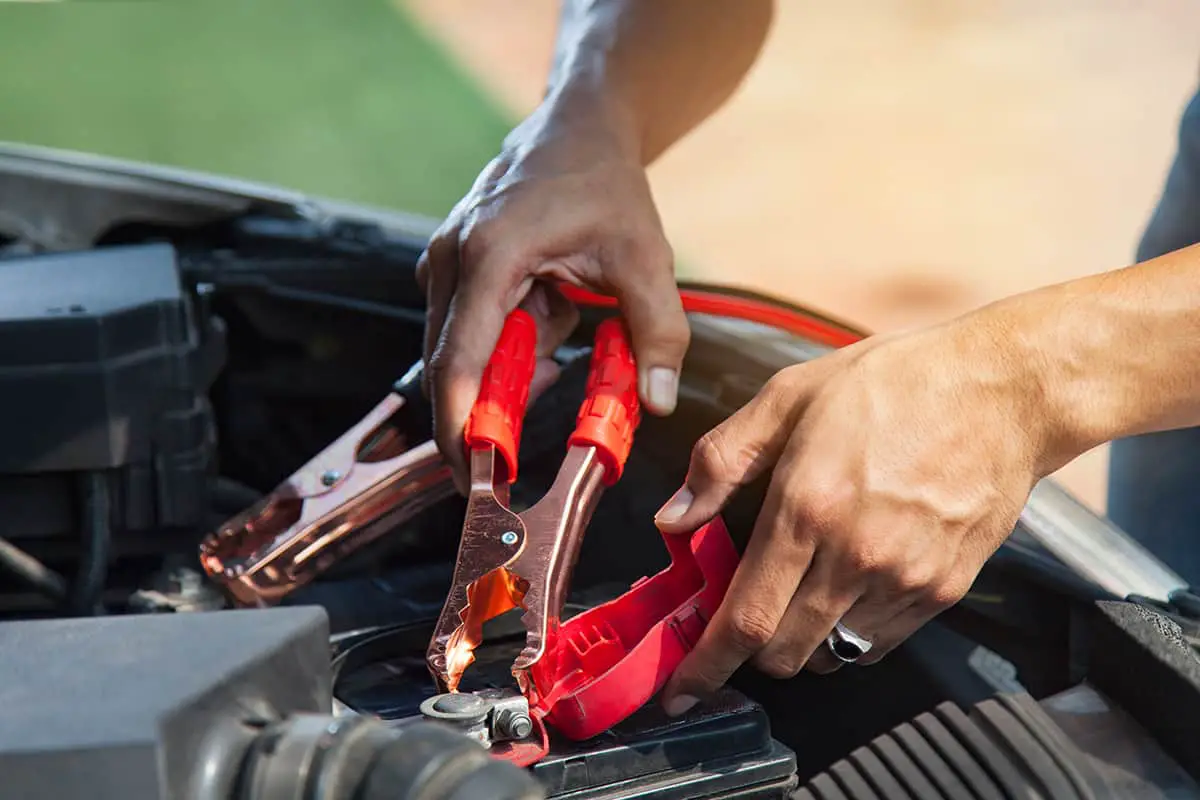
Now that we’ve identified some possible reasons why your Ford Escape won’t start after getting gas let’s discuss how to fix each of these issues.
1. Fixing fuel pump failure
- Check for any signs of a failing fuel pump, such as poor acceleration, stalling, or whining noise from the fuel tank.
- Consult your owner’s manual to locate the fuel pump.
- Test the fuel pump by measuring fuel pressure or listening for any unusual noises.
- If the fuel pump is faulty, replace it with a new one. This may require the help of a professional mechanic.
2. Repairing EVAP system malfunction
- Look for signs of a malfunction, such as a check engine light or a strong fuel smell near the car.
- Use an OBD-II scanner to read any diagnostic trouble codes (DTCs) related to the EVAP system.
- Inspect the EVAP system components, like the purge valve and vent valve, for any visible damage or leaks.
- Replace any faulty components and clear the DTCs using the OBD-II scanner.
3. Addressing ignition system issues
- Inspect the spark plugs for wear or damage. Replace them if necessary.
- Check the ignition coils for any signs of malfunction, such as cracks or corrosion. Replace any faulty coils.
- If the ignition switch is suspected, consult your owner’s manual for guidance on testing and replacement.
4. Resolving battery or alternator problems
- Test the battery using a multimeter or battery tester. Replace the battery if it’s weak or not holding a charge.
- Inspect the alternator for any visible damage or signs of malfunction. Test the alternator using a multimeter or an alternator tester.
- If the alternator is faulty, replace it with a new one. This may require the help of a professional mechanic.
5. Dealing with bad gas
- If you suspect the gas is contaminated, try adding a fuel additive designed to remove water and other contaminants.
- If the problem persists, you may need to drain the fuel tank and refill it with fresh gasoline from a reputable gas station.
- To prevent future issues, always use good quality fuel and consider using a fuel stabilizer if your car is stored for long periods.
